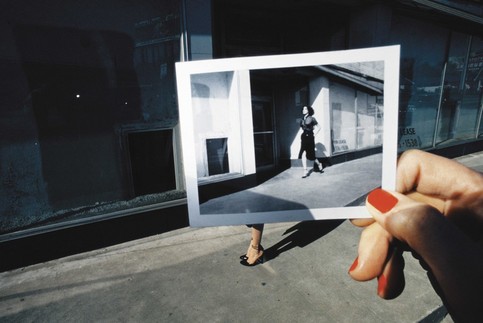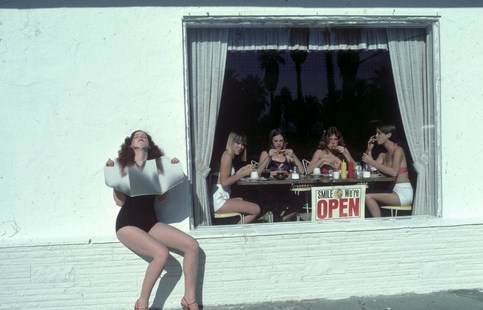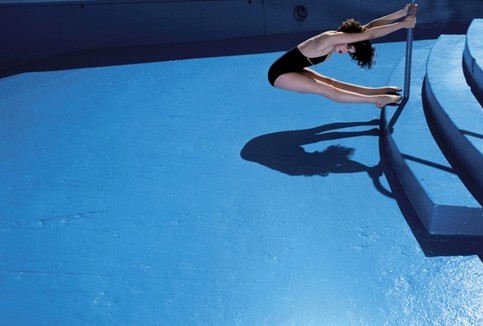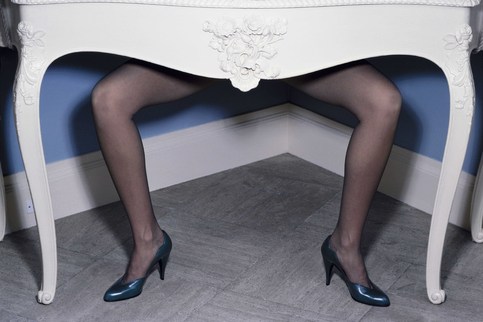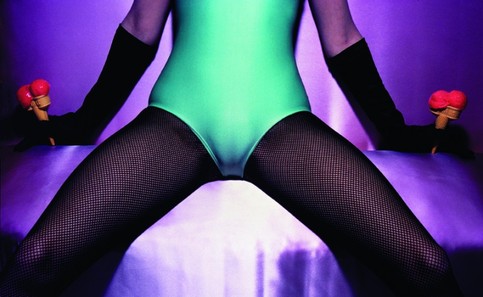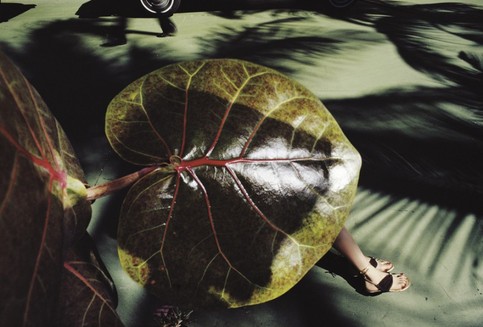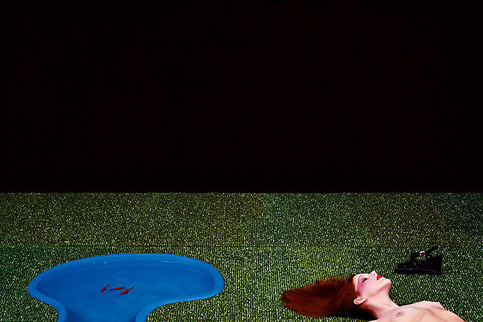DRAMA KING
BY WALL DONE, 17/02/2012
Guy Bourdin's fashion photography was dark, theatrical and disturbing. While he was considered one of the coolest photographers of his time, he refused to have his work celebrated.
Guy Bourdin probably never meant for his photographs to be seen on magazine pages again. Throughout his career, spanning three decades, he created thousands of images for French Vogue and advertising campaigns and yet saved almost nothing for posterity. So even before his death of cancer in 1991, you could be forgiven for asking, 'Guy who?'
In the Sixties and Seventies, Guy Bourdin, was the coolest photographer in Paris – then regarded as a cultural hotspot. But unlike his contemporaries, who revelled in their burgeoning rock-star status, he ducked away from the limelight and continually turned down offers to exhibit or compile a book of his photographs.
Although Bourdin worked as a fashion photographer, his pictures were never just about clothes. They were incidents, troubling scenes from movies never made. The women populating his images were characterized by their flawless pallor and make-up (originally inspired by Bourdin's mother) that resembles an over-zealous mortician, all livid pink blush and three-dimensional lipgloss. The clothes were almost incidental to the drama.
There is nothing straightforward about Bourdin's work. Emma Soames entered his orbit working for French Vogue in 1971 and found herself keeping track of two Andy Warhol models running amok outside the French Parliament in nothing but high heels. 'He caused havoc but we adored him,' she asserts. 'Working with him was a real adventure.' Such escapades could involve anything from transporting a reeking tuna halfway across France to complete one of Bourdin's scenarios, scouring Paris for a wall made of 'the right kind of bricks' to comply with his specific demands.
His models also required a healthy sense of adventure. 'It really went beyond being a pretty girl,' stylist Grace Coddington once commented. Bourdin tended to avoid professional models, as his one-time assistant Icaro Kosak recalls. 'He'd look at a girl and think, "Will she go all the way?" Not sexually, but "Will she hang from the ceiling with five bags of ice in her pockets?"
Guy's studio down the dingy Rue des Ecouffe in the Marais district of Paris was an ideal playing field for these games. A dungeon-like warehouse, it had no telephone and a toilet accessible only by walking along precarious wooden planks. When Kosak started working for Bourdin in 1975, Guy didn't speak to him directly for three months. Only when Kosak was about to topple off a stepladder screaming 'Help!' did Bourdin respond: 'Icar, a good assistant never asks for help.'
Kosak quickly realized that Bourdin's skill in the studio was as much psychological as it was technical: 'He would create a situation which forced three or four people who couldn't stand each other into a confined space for 12 hours, and observe how the whole thing would slowly, slowly get out of hand.'
So keen was he on cultivating tensions between the assembled models, make-up artists, and fashion editors, he once suggested to Kosak that they line the walls of the tiny make-up room with copper mesh so not one spark of the electric atmosphere that built up could escape.
Bourdin was never one to shy away from life's dark side. For his first commission for Vogue, he photographed a model in a graceful net-veiled hat in front of a butcher's market stall - five-spectral looking calves' heads hanging from hooks above her, their five wan tongues lolling. He came to enjoy complete control over his Vogue pictures; the magazine's support for him became so unequivocal that reputedly staff would go into ecstasies over a Bourdin photograph before they had set eyes on it.
Joining the dots between his arresting pictures and his private life, Bourdin is often referred to as a misogynist puppet-master. The suicide of his second wife Sybille Dallmer, completes this sketchy image. Before her death Dallmer devoted herself to organizing Bourdin's business affairs so exclusively that by the end she rarely left the fifth floor apartment they shared. Following the tragedy, 'He surrounded himself with the wrong people. It was like tempting the devil,' Says Kosak, who remained a friend until Bourdin's death.
During his life Bourdin liked to get his own way. Once when he was refused entrance to a nightclub, he tore his clothes off and cried, 'If I can't get in then my clothes will!' With all this can-do energy channeled into his high-voltage images, it is no surprise that his photographs have survived him. Even against his will. —Naomi West
--
On display from February 02, 2012 till March 10, 2012 at Michael Hoppen Gallery. The exclusive representative of the Estate of Guy Bourdin.
All images © Guy Bourdin

